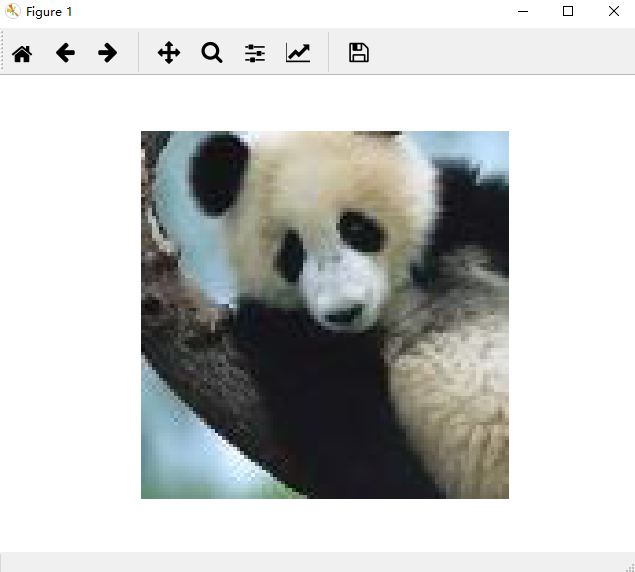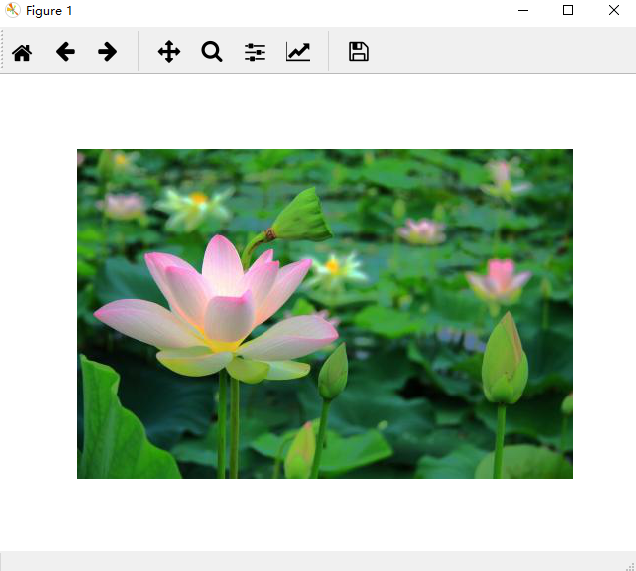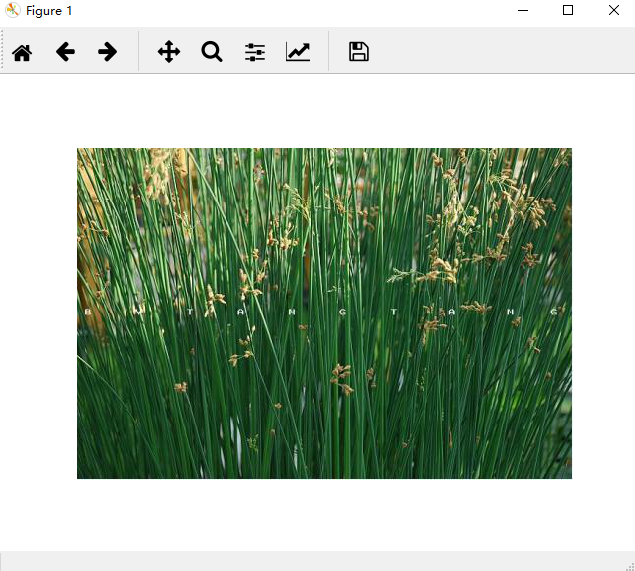TensorFlow:使用inception-v3实现各种图像识别
程序来自博客:
# https://www.cnblogs.com/felixwang2/p/9190740.html
上面这个博客是一些列的,所以可以从前往后逐一练习。
# https://www.cnblogs.com/felixwang2/p/9190740.html
# TensorFlow(十五):使用inception-v3实现各种图像识别 import tensorflow as tf
import os
import numpy as np
import re
from PIL import Image
import matplotlib.pyplot as plt class NodeLookup(object):
def __init__(self):
label_lookup_path = 'inception_model/imagenet_2012_challenge_label_map_proto.pbtxt'
uid_lookup_path = 'inception_model/imagenet_synset_to_human_label_map.txt'
self.node_lookup = self.load(label_lookup_path, uid_lookup_path) def load(self, label_lookup_path, uid_lookup_path):
# 加载分类字符串n********对应分类名称的文件
proto_as_ascii_lines = tf.gfile.GFile(uid_lookup_path).readlines()
uid_to_human = {}
#一行一行读取数据
for line in proto_as_ascii_lines :
#去掉换行符
line=line.strip('\n')
#按照'\t'分割
parsed_items = line.split('\t')
#获取分类编号
uid = parsed_items[0]
#获取分类名称
human_string = parsed_items[1]
#保存编号字符串n********与分类名称映射关系
uid_to_human[uid] = human_string # 加载分类字符串n********对应分类编号1-1000的文件
proto_as_ascii = tf.gfile.GFile(label_lookup_path).readlines()
node_id_to_uid = {}
for line in proto_as_ascii:
if line.startswith(' target_class:'):
#获取分类编号1-1000
target_class = int(line.split(': ')[1])
if line.startswith(' target_class_string:'):
#获取编号字符串n********
target_class_string = line.split(': ')[1]
#保存分类编号1-1000与编号字符串n********映射关系
node_id_to_uid[target_class] = target_class_string[1:-2] #建立分类编号1-1000对应分类名称的映射关系
node_id_to_name = {}
for key, val in node_id_to_uid.items():
#获取分类名称
name = uid_to_human[val]
#建立分类编号1-1000到分类名称的映射关系
node_id_to_name[key] = name
return node_id_to_name #传入分类编号1-1000返回分类名称
def id_to_string(self, node_id):
if node_id not in self.node_lookup:
return ''
return self.node_lookup[node_id] #创建一个图来存放google训练好的模型
with tf.gfile.FastGFile('inception_model/classify_image_graph_def.pb', 'rb') as f:
graph_def = tf.GraphDef()
graph_def.ParseFromString(f.read())
tf.import_graph_def(graph_def, name='') gpu_options = tf.GPUOptions(allow_growth=True)
with tf.Session(config=tf.ConfigProto(gpu_options=gpu_options)) as sess:
softmax_tensor = sess.graph.get_tensor_by_name('softmax:0')
#遍历目录,如果images下没有图片,则没有任何识别
for root,dirs,files in os.walk('images/'):
for file in files:
#载入图片
image_data = tf.gfile.FastGFile(os.path.join(root,file), 'rb').read()
predictions = sess.run(softmax_tensor,{'DecodeJpeg/contents:0': image_data})#图片格式是jpg格式
predictions = np.squeeze(predictions)#把结果转为1维数据 #打印图片路径及名称
image_path = os.path.join(root,file)
print(image_path)
#显示图片
img=Image.open(image_path)
plt.imshow(img)
plt.axis('off')
plt.show() #排序
top_k = predictions.argsort()[-5:][::-1]
node_lookup = NodeLookup()
for node_id in top_k:
#获取分类名称
human_string = node_lookup.id_to_string(node_id)
#获取该分类的置信度
score = predictions[node_id]
print('%s (score = %.5f)' % (human_string, score))
print()
测试几张图,与结果分别贴到下面,根据程序需要,你自己需要在程序所在目录下建立一个images的文件夹,然后将图片放进去。
在上一个联系中,下载google的inception模型时顺带下载了一张大熊猫的图片,我就复制到新建的images文件夹下,然后随便从网上下载了两张图,一张时荷花的,一张是水葱的。
运行程序结果:

显示一张大熊猫,关闭,显示预测结果:
images/cropped_panda.jpg
giant panda, panda, panda bear, coon bear, Ailuropoda melanoleuca (score = 0.89107)
indri, indris, Indri indri, Indri brevicaudatus (score = 0.00779)
lesser panda, red panda, panda, bear cat, cat bear, Ailurus fulgens (score = 0.00296)
custard apple (score = 0.00147)
earthstar (score = 0.00117)

接着显示一张荷花,关闭显示预测结果:
images/Lotus.jpg
daisy (score = 0.52279)
sulphur butterfly, sulfur butterfly (score = 0.07167)
pot, flowerpot (score = 0.04293)
cabbage butterfly (score = 0.02629)
bee (score = 0.01437)

再接着显示一张水葱,关闭显示预测结果:
images/water_onion.jpg
lakeside, lakeshore (score = 0.32870)
corn (score = 0.19709)
ear, spike, capitulum (score = 0.15878)
yellow lady's slipper, yellow lady-slipper, Cypripedium calceolus, Cypripedium parviflorum (score = 0.01670)
hay (score = 0.01296)
从预测结果来看,大熊猫识别准确率很高;荷花居然预测成雏菊;水葱预测成湖边。看来后两个对象都没有训练好。
TensorFlow:使用inception-v3实现各种图像识别的更多相关文章
- Inception V3 的 tensorflow 实现
tensorflow 官方给出的实现:models/inception_v3.py at master · tensorflow/models · GitHub 1. 模型结构 首先来看 Incept ...
- 源码分析——迁移学习Inception V3网络重训练实现图片分类
1. 前言 近些年来,随着以卷积神经网络(CNN)为代表的深度学习在图像识别领域的突破,越来越多的图像识别算法不断涌现.在去年,我们初步成功尝试了图像识别在测试领域的应用:将网站样式错乱问题.无线领域 ...
- 1、VGG16 2、VGG19 3、ResNet50 4、Inception V3 5、Xception介绍——迁移学习
ResNet, AlexNet, VGG, Inception: 理解各种各样的CNN架构 本文翻译自ResNet, AlexNet, VGG, Inception: Understanding va ...
- 微调Inception V3网络-对Satellite分类
目录 1. 流程概述 2. 准备数据集 2.1 Satellite数据集介绍 3. Inception V3网络 4. 训练 4.1 基于Keras微调Inception V3网络 4.2 Keras ...
- 脸型分类-Face shape classification using Inception v3
本文链接:https://blog.csdn.net/u011961856/article/details/77984667函数解析github 代码:https://github.com/adoni ...
- 网络结构解读之inception系列四:Inception V3
网络结构解读之inception系列四:Inception V3 Inception V3根据前面两篇结构的经验和新设计的结构的实验,总结了一套可借鉴的网络结构设计的原则.理解这些原则的背后隐藏的 ...
- 从GoogLeNet至Inception v3
从GoogLeNet至Inception v3 一.CNN发展纵览 我们先来看一张图片: 1985年,Rumelhart和Hinton等人提出了后向传播(Back Propagation,BP)算法( ...
- 经典分类CNN模型系列其五:Inception v2与Inception v3
经典分类CNN模型系列其五:Inception v2与Inception v3 介绍 Inception v2与Inception v3被作者放在了一篇paper里面,因此我们也作为一篇blog来对其 ...
- TensorFlow学习笔记(四)图像识别与卷积神经网络
一.卷积神经网络简介 卷积神经网络(Convolutional Neural Network,CNN)是一种前馈神经网络,它的人工神经元可以响应一部分覆盖范围内的周围单元,对于大型图像处理有出色表现. ...
随机推荐
- [JSOI2016]最佳团体 DFS序/树形DP
题目 洛谷 P4322 [JSOI2016]最佳团体 Description 茜茜的舞蹈团队一共有\(N\)名候选人,这些候选人从\(1\)到\(N\)编号.方便起见,茜茜的编号是\(0\)号.每个候 ...
- 安装python3并新建python3的虚拟环境
安装依赖 yum install openssl-devel bzip2-devel expat-devel gdbm-devel readline-devel sqlite-devel -y 下载P ...
- centos7修改xshell默认访问端口由22修改为62058
1.vim /etc/ssh/sshd_config 2.新加端口62058:Port 62058 3.重启sshd服务:systemctl restart sshd 4.将新加端口添加到防火墙并重启 ...
- Python爬虫之post请求
暑假放假在家没什么事情做,所以在学习了爬虫,在这个博客园里整理记录一些学习的笔记. 构建表单数据(以http://www.iqianyue.com/mypost 这个简单的网页为例) 查看源代码,发现 ...
- MongoDB - String转换为Int,并更新到数据库中
方法1 使用$convert, MongoDB版本 >= 4,速度快. 使用pymongo示范,原生mongo语句并没有尝试. # 假设{'age': '47'}, 转换后为{'age': 47 ...
- python3爬取电影数据
爬取电影票房数据,用于统计建模分析.目标网站为电影票房数据库(http://58921.com/alltime). 基本的爬取静态网站的技术,模拟登陆使用的是最简单的cookies.(这种模拟登陆的方 ...
- windows好用的cmd命令
1.如何查看本机ip局域网ip 在cmd中输入ipconfig 2.如何在不重启浏览器的情况下让刚修改的hosts生效, 因为服务器和浏览器都有DNS缓存,在cmd中执行ipconfig /flush ...
- Tomcat 端口配置,及原理详解
1 tomcat 文件配置详细说明 tomcat服务器需配置三个端口才能启动,安装时默认启用了这三个端口,当要运行多个tomcat服务时需要修改这三个端口,不能相同.端口配置路径为tomcat\ co ...
- AcWing 148. 合并果子
#include <iostream> #include <algorithm> #include <queue> using namespace std; int ...
- AcWing 154. 滑动窗口
https://www.acwing.com/problem/content/156/ #include <iostream> using namespace std; ; int a[N ...
